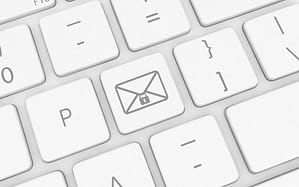How to Secure Your Email
How to Secure Your Email
Cybercriminals target emails because they serve as the key to many of our online accounts. When they get access to your emails, they can reset passwords and take over online banking accounts, and social media profiles, send e-mails to workmates or friends and even use your email to scam other people.
Some cybercriminals go as far as pretending to be you for months, messaging your friends on social media accounts in an attempt to gather more information. Imagine the impact this will have on your reputation.
Millions of people become victims of identity theft every year. Here are tips on how to secure your email and ensure that your information is safe.
Use a Password Manager
A password manager saves all your passwords, so you don’t need to memorize which combination belongs to which account. You won’t need to manually input all your passwords in a notepad or app on your phone, which hackers can easily access, as well. While you can still keep a copy of your passwords for emergency purposes, you can keep them in a much more secure folder or on an actual notebook now that you won’t need to go enter passwords again and again.
Activate Two-Factor Authentication
Go to your email settings and turn on two-factor authentication, which adds another layer of security to your emails through a code that will be sent to you. Once anyone logs in to your email, you will be alerted through the phone number or the device where your email is currently logged in and the person attempting to log in will need to enter the code before they can successfully sign in.
Get An Antivirus Software
Get reliable antivirus software and keep it turned on when accessing your email. Antivirus software scan images, attachments, links, and other content for malware. You can also activate Gmail’s virus scanner if you don’t have antivirus software yet.
Learn to Recognize Phishing Emails
Phishing emails are designed to look real, often resembling professional business emails. Check for mismatched URLs in links, mismatched sender information, and for typically urgent requests for personal information. Grammatical and spelling mistakes are also red flags.
Protect Your Wi-Fi Network
Secure your Wi-Fi Network by protecting your network’s credentials. Get a strong password and update your password every 3 months. As much as possible, refrain from using and opening your e-mail accounts using public Wi-Fi or computers. Accessing confidential information is best done in your protected home or work network.
Update Your Devices’ Systems
Updating your computer, smartphone, or tablet’s system ensures that your security system is also updated. Aside from adding new features, software developers fix bugs and solve security issues and add them to system updates. As much as possible, update your devices’ software to keep them safe from cyber-attacks.


3 Responses